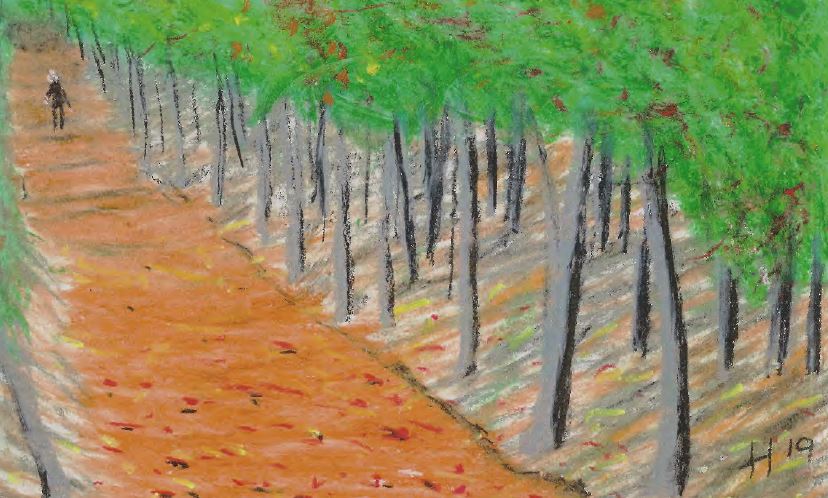
Leasha Pridmore is a mature student studying Art and Design Foundation at Lincoln College. As part of a partnership between the college and HMP Lincoln, Leasha has spent a semester running art workshops in the prison. All of the artwork featured was produced by prisoners.
In this blog, Leasha shares her experience of creating art with vulnerable prisoners, and Governor Paul Yates tells us why this art partnership is important to him.
Signing up for an art course had me thinking I would be shaping clay like Demi Moore and painting like Picasso. Little did I realise that four months into the course I would be walking through the doors of HMP Lincoln to teach art to prisoners.
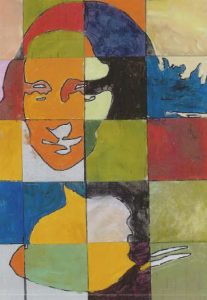
Each year the Foundation Diploma in Art & Design students at Lincoln College get asked to go and run some art sessions with prisoners there. We are all required to complete 30 hours of work experience in the duration of our year-long course. For me, looking to get back into teaching adult education, this was a perfect way to earn my work experience. If I worked hard enough and proved myself to my tutors, I might impress the people that might employ me after I finish my studies. This became about much more than a bit of work experience, I felt like my future as a teacher depended on doing this well.
What if I brought any subconscious social prejudices into the prison? What if I couldn’t cope if I found out what someone had done? So many questions and the only way to find the answers was just to go ahead with it and hope for the best.
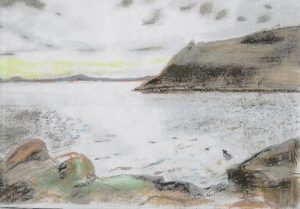
Our first visit to the prison was daunting as we adhered to the unfamiliar strict instructions and protocol required. Admittedly I was taken aback when we walked through a wing and I realised that it looks just like it does in Bad Girls! As a mature student and ex community education tutor, I seemed to naturally drift into the lead role and ended up liaising with Leigh, the Business Community Engagement Manager, directly.
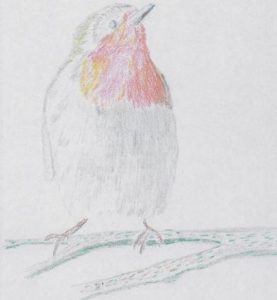
Being honest, when we were told we were going in to teach vulnerable prisoners, it terrified me. What if I brought any subconscious social prejudices into the prison? What if I couldn’t cope if I found out what someone had done? So many questions and the only way to find the answers was just to go ahead with it and hope for the best. That theory was great but my anxieties began to kick in as it drew nearer and the night before I was so close to cancelling and pulling out of the project. And then I recalled what Leigh had said about how important these sessions are to the prisoners. And I couldn’t do it; I couldn’t leave them in the lurch. So I went, alone, for my first session.
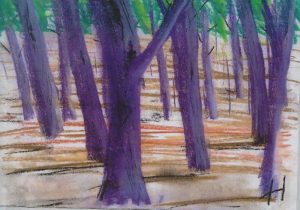
I’m so glad I did. It was incredible! My students were so eager to learn and really got their hands dirty… literally. They all left that day with their hands covered in chalk – the sign of a brilliant art lesson! I hadn’t walked into a room to find someone to be afraid of, I had walked into a room with five men who had made mistakes of a criminal kind, but who were friendly, talkative, reminiscent, and just wanted to forget where they were for a couple of hours. Each session was tailored to them and if they wanted to learn a specific technique, we prepared it for the following week, and if they wanted to just paint or draw something, that was fine too.
I hadn’t walked into a room to find someone to be afraid of, I had walked into a room with five men who had made mistakes of a criminal kind, but who were friendly, talkative, reminiscent, and just wanted to forget where they were for a couple of hours.
Over the course of the next couple of months, students came and went, but one day I had a student who created a picturesque scene with hilltops, sea, sunset and a lone biker. It was fantastic. He turned to me and said “I may never get to see anything like that again, but I can dream.” Somehow this short conversation became the focus of my final project at college. My starting point and message I wanted to convey was that people in prison are more than their crimes – they’re human, and they have feelings and needs like the rest of us.
Each session was tailored to them and if they wanted to learn a specific technique, we prepared it for the following week, and if they wanted to just paint or draw something, that was fine too.
We finish college in six weeks’ time. It should mean the end of the art sessions but a few of us are looking to stay on and continue for another term, I think because we are learning as much about ourselves as our students are learning about art. I will then be back in September when I begin my CertEd at college. My goal one day is to get back into teaching full time, until then I will volunteer for a session each week. Who knows, maybe one day I’ll become a fully-fledged HMP staff member!

Oh, and the guy who said he would never see that scene again? He got released three weeks ago. I hope he’s sat looking at that scene now blissfully unaware that he inspired my whole project. I’d like to thank him one day but I hope I never get the chance.
A note from Paul Yates, Governor of HMP Lincoln:
“As governor I am clear that art has an important role in rehabilitating prisoners. Producing art in whatever format is a worthy activity and can offer comfort and purpose in a prison environment. It can also help contribute to sense of normality. Prisoners often send art out to their families which supports contact and communication with loved ones. Leasha has done a sterling job with this group of prisoners some who may not recognise the importance of art both producing and appreciating.
I am also pleased that Leasha, has used this experience positively and learnt from the experience. Whilst I accept that it is the responsibility of my team and very able staff to run this prison safely, securely and decently, I also believe that the community has a role to play. Educators for example can change lives and inspire prisoners, the majority of whom will be released to a home near us. I want prisoners to serve the order of the court, make best use of their time in prison and then play an active role in their families and their communities on release. Art is part of that journey to change as we can see from Leasha’s blog. Thank you.”
This is part of the Prison University partnerships blog series, which shines a spotlight each month on an example of prisons and universities working in partnership to deliver education. If you would like to respond to the points and issues raised in this blog, or to contribute to the blog yourself, please contact Helena.